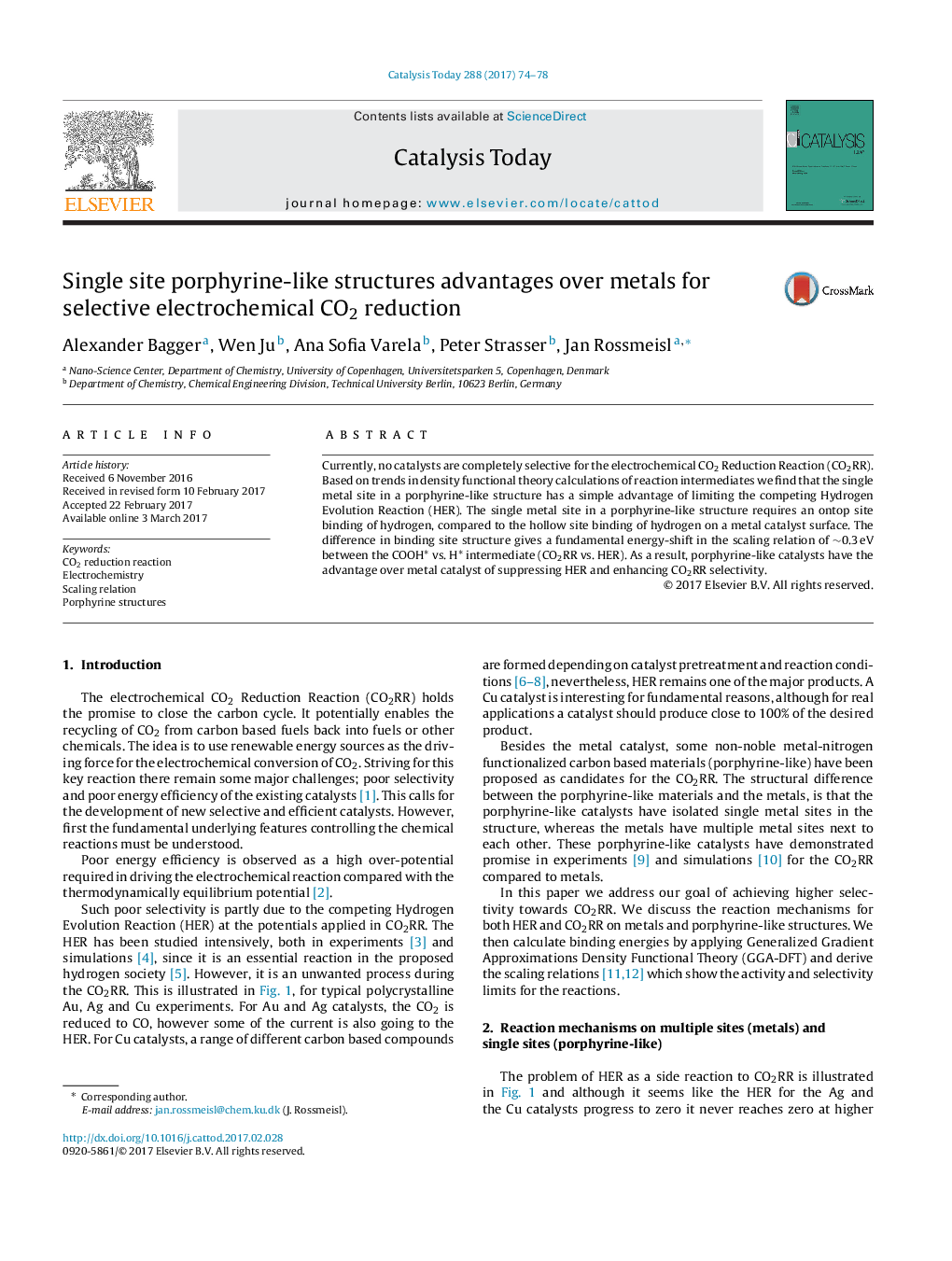| کد مقاله | کد نشریه | سال انتشار | مقاله انگلیسی | نسخه تمام متن |
|---|---|---|---|---|
| 6455247 | 1419167 | 2017 | 5 صفحه PDF | دانلود رایگان |

- We study CO2 reduction and the unwanted side reaction: hydrogen evolution.
- Based on DFT-simulations we explain trends in selectivity and activity.
- We compare two classes of catalysts: metals and porphyrine-like structures.
- The single sites in the porphyrin structures suppress hydrogen evolution.
- Thus some porphyrin structures can reduce CO2 to CH4 with high efficiency.
Currently, no catalysts are completely selective for the electrochemical CO2 Reduction Reaction (CO2RR). Based on trends in density functional theory calculations of reaction intermediates we find that the single metal site in a porphyrine-like structure has a simple advantage of limiting the competing Hydrogen Evolution Reaction (HER). The single metal site in a porphyrine-like structure requires an ontop site binding of hydrogen, compared to the hollow site binding of hydrogen on a metal catalyst surface. The difference in binding site structure gives a fundamental energy-shift in the scaling relation of â¼0.3Â eV between the COOH* vs. H* intermediate (CO2RR vs. HER). As a result, porphyrine-like catalysts have the advantage over metal catalyst of suppressing HER and enhancing CO2RR selectivity.
156
Journal: Catalysis Today - Volume 288, 15 June 2017, Pages 74-78